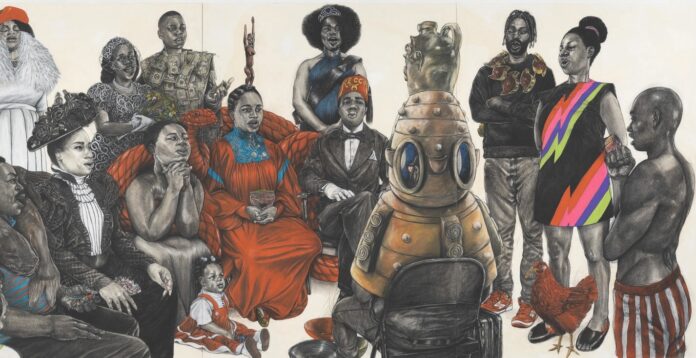Engaging contemporary artists to reflect upon and “redraw” history is among the most vital and dynamic roles museums perform in 2024, turning them from jaundiced repositories of narrow interests to immersive interpreters of history.
Berkeley Art Museum and Pacific Film Archive’s upcoming exhibition, A Movement in Every Direction: Legacies of the Great Migration (April 13-September 2) dives into this mission with relish. The five-city nationally touring exhibit—co-organized by the Mississippi Museum of Art and the Baltimore Museum of Art and co-curated by Ryan N. Dennis and Jessica Bell Brown—showcases 12 contemporary artists expressing in newly commissioned work their perspectives on the massive movement of six million Black Americans in the United States between 1915 and 1970.
The remarkable diaspora of Black people known as the Great Migration had enormous impact on Black (and overall US) culture and history throughout the country, including in the Bay Area, where between 1940 and 1970, more than 300,000 Black people arrived—many from the Deep South. The majority found employment, established homes and businesses, transformed industrial and commercial cities and industries, transplanted ancestral traditions and legacies, and created new neighborhoods and communities. Racism, institutional bias, and violence were never out of the frame, but neither were Black joy, strength, and ingenuity.
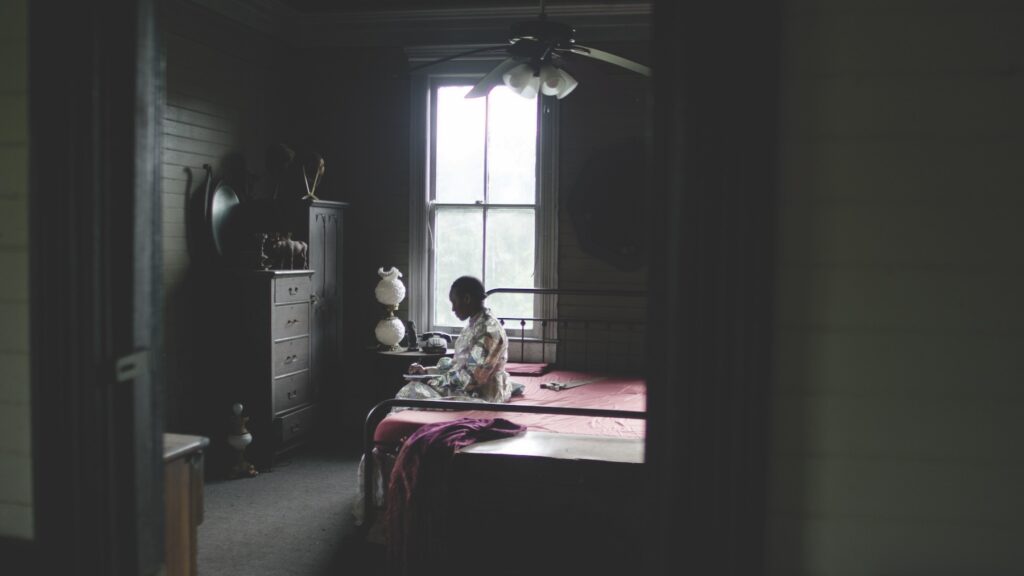
Among the artists in the show include Akea Brionne, Torkwase Dyson, Theaster Gates Jr., Allison Janae Hamilton, Robert Pruitt, and Carrie Mae Weems. Expressing personal responses and reflecting deep historical research, the artwork is expectedly varied in medium and ranges from painting to sculpture, video, sound to immersive installation.
Berkeley’s presentation is organized by BAMPFA’s senior curator Anthony Graham along with curatorial associate Matthew Villar Miranda. In an interview, Graham says organizing the exhibit involved approaching the work as a collection of distinct projects that have shared resonance. “The show foregrounds the artists and their individual processes and practices. We become aware of the ways their work becomes an expansive result of research that is archival, personal, and familial.
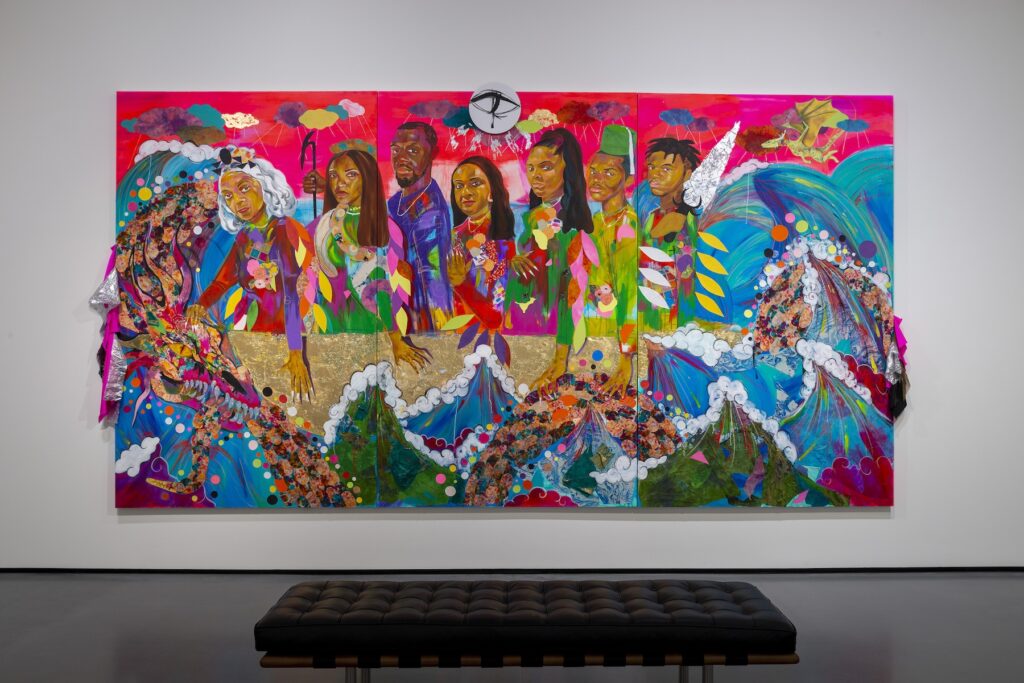
“The curation and organizing allows the work and the artists to guide us into the history of the Great Migration.” The layout, he adds, provides opportunity for each artist to “have a moment to themselves in the space,” but also offers groupings, proximity, or progressions that draw out connections between the works without predetermining exactly what visitors experience and take away from the exhibit.
Presenting this exhibit on the West Coast in light of the incredible growth of the Black population in the Bay Area during the second wave of the Great Migration, Graham says, informed the decision to bring it to BAMPFA. But the exhibit is not restrictive, and the art and artists also reveal the many locations worldwide that have been transformed by Black immigration. The works represented and stories told in the exhibit, while being grounded in location and space, manage to occupy what might be called a galactic place, with cosmic implications that invite deep conversations and suggest universal connectivity.
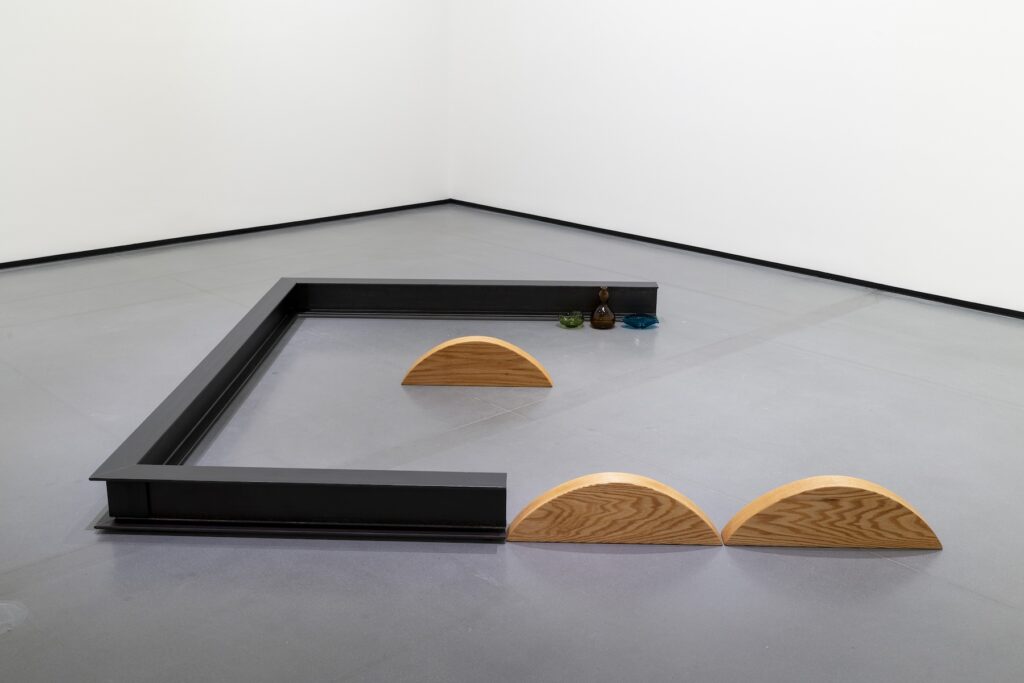
Asked to speak about a selection of three artists and their work, Graham says Leslie Hewitt’s Untitled (Barely Moving, Imperceptible, Slow Drag), three sculptures made with hot rolled steel, red oak, and inherited glass objects, are intentionally shown separately throughout the galleries. “They’re placed on the ground and have an architectural quality. They hold and delineate a space, like a floorpan for a room. They bring up domestic metaphors of things contained in our homes.
“You approach one, continue through the show, then encounter another, and then the third—you experience slow-moving shifts (between each one). On one side of her family she can trace migration to New York; on the other side it’s from Georgia to Chicago to Harlem. The wood she uses is specific and found along that migration. She’s addressing memories and stories we inherit with the (inclusion of) glass vessels from her grandmother.”
Akea Brionne’s series of six jacquard tapestries are given added physical dimension with poly-fil, rhinestones, and beading, and metaphorical layering that brings archival research and a trove of family photographs into animated, textile form. “The built up surfaces and images of people in the photographs make it seem as if the figures depicted emerge out of the picture into real space. The quilts tell intimate personal stories of a group of sisters who stayed in the South and worked to support the success of migrating men in their families—and the sacrifices they made to ensure the advancement of their families. Often the images show quieter moments that are like snapshots of the everyday lives of these women.”
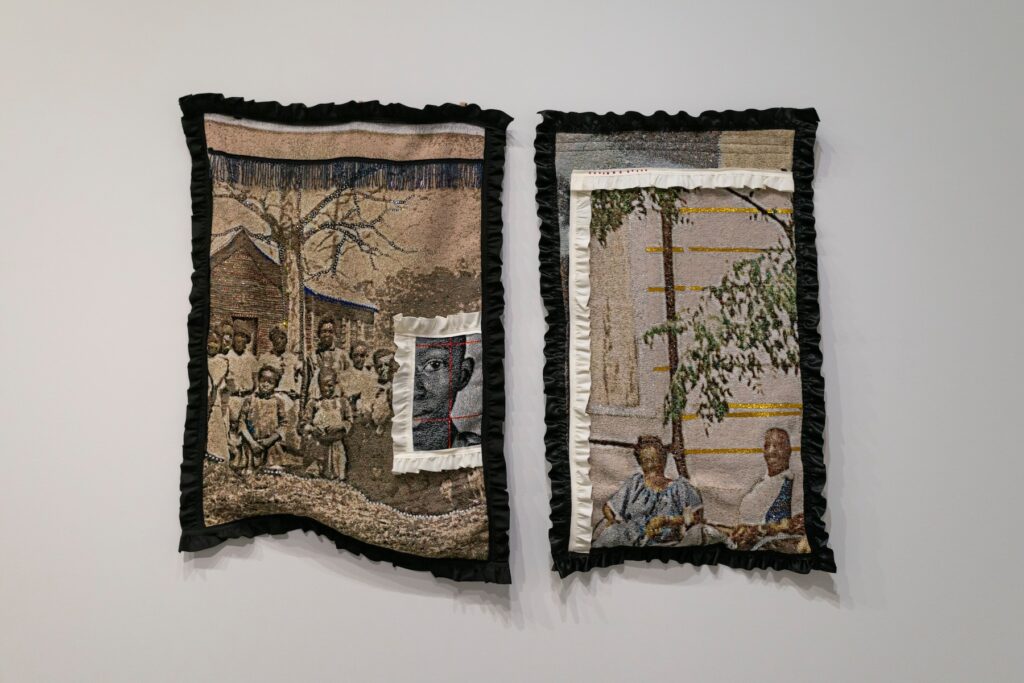
Allison Janae Hamilton’s three-channel installation A House Called Florida revisits the history of Black people who lived and remained in Florida. “They faced struggles and hardships but also created rich and full lives. It takes as a starting point a short story by (Argentine writer) Julio Cortázar, Casa Tomada, which translates as House Taken Over. It’s a house taken over by ghosts who push out its inhabits and in the video, we see ghostlike figures or spectral spirits pushed from room to room by unseen forces. There’s an expansive narrative that reflects on what it means to be safe in a place of displacement.”
Graham says the exhibit caused him to reflect on his and his family’s relationship with migration. “As someone whose family has been in California for a few generations, I only recently moved from Southern California to the Bay Area and am getting to know it. We often understand the Great Migration as movement from one place to another. From the Deep South to the West. What’s brought to light in this exhibition is that it was not so one-directional. People stayed in the South, moved from one part to another. That caused me to think about my family’s rootedness in California. It’s a tool for thinking about why I choose to stay here. I’ve had departures, but I’ve always returned to California for reasons I am still uncovering and discussing in conversations with my family.”
A MOVEMENT IN EVERY DIRECTION” LEGACIES OF THE GREAT MIGRATION April 13-September 2, BAMPFA, Berkeley. More info here.

